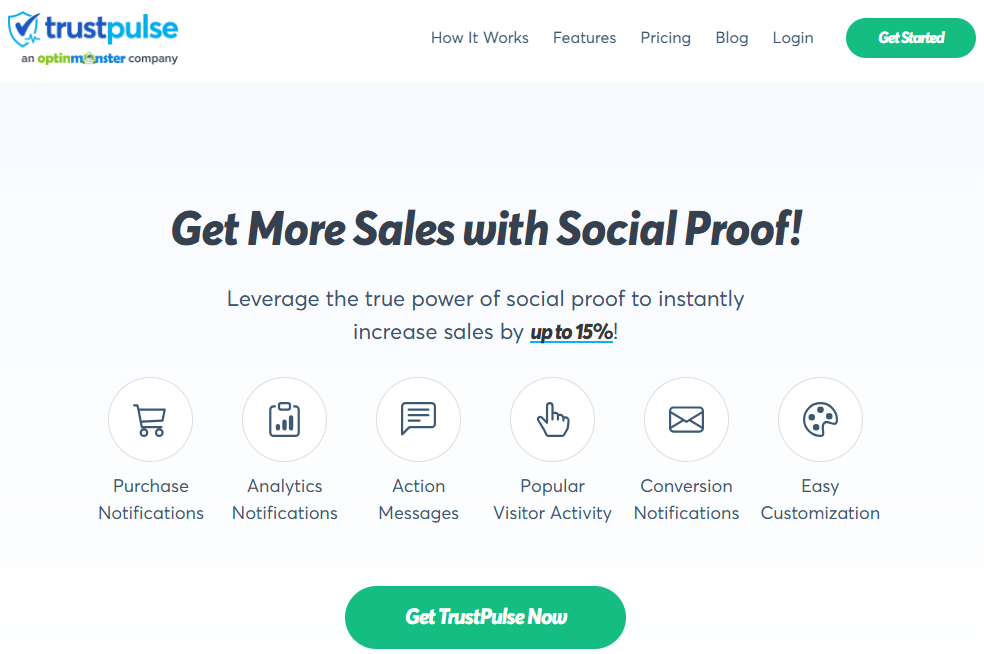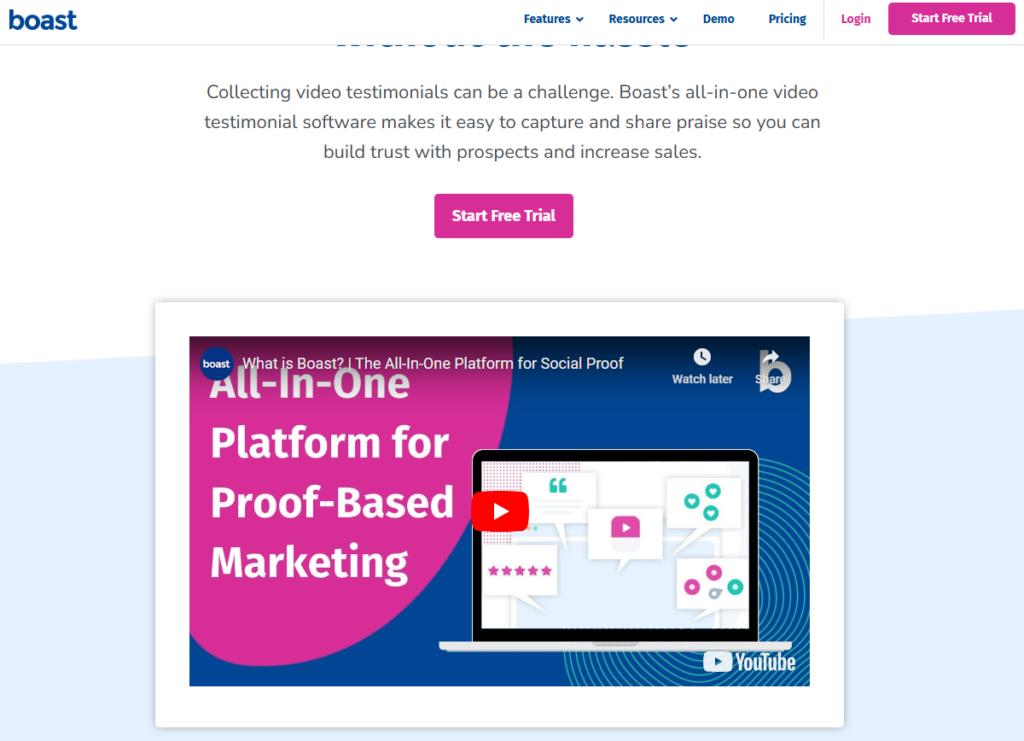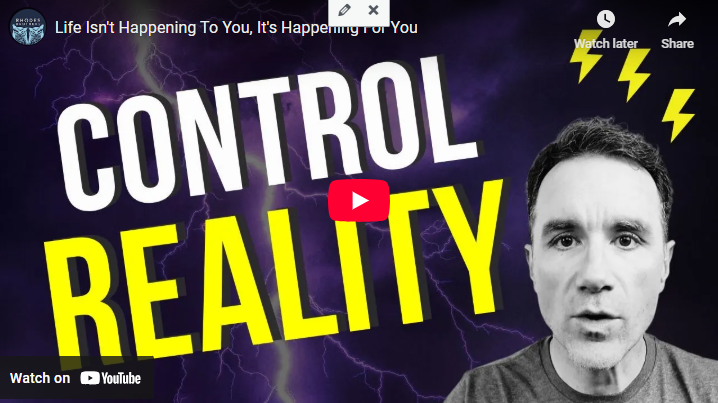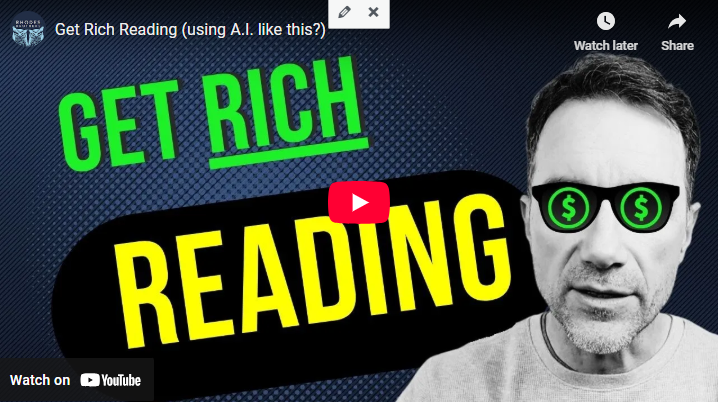For More Free Videos, Subscribe to the Rhodes Brothers YouTube Channel.
“Preventing objections isn’t about being sneaky; it’s about understanding your audience so well that you address their concerns before they even arise.” – John S. Rhodes

Crafting a sales letter that converts isn’t just about flashy headlines or irresistible offers. It’s about removing the barriers that stop your audience from saying, “Yes.” Objections—those nagging doubts in your prospect’s mind—are the silent deal-breakers. The good news? You can prevent them entirely with the right strategies.
Envision creating a sales letter so powerful that your reader doesn’t even think to say, “But what about…” The secret lies in a mix of psychology, clear communication, and some tried-and-true techniques. In this guide, we’ll dive into actionable steps to help you eliminate objections before they derail your sales efforts. Along the way, we’ll explore strategies like “going blind,” “benefit flipping,” and “risk reversal,” all drawn from John S. Rhodes’ expert advice.
TL;DR
- Prevent objections by addressing them before they arise.
- Use the “going blind” technique to spark curiosity and dismantle doubts.
- Leverage “benefit flipping” to transform potential negatives into selling points.
- Master risk reversal to make your offer feel safe and irresistible.
- Incorporate social proof, testimonials, and guarantees to build trust.
- Understand common mistakes and how to avoid them.
- Learn actionable strategies for crafting high-converting offers.
Ready? Let’s dive into the nuts and bolts of objection-proof sales letters.
What Are Objections, and Why Do They Happen?
Objections are the mental roadblocks that stop your reader from buying. They might think, “Is this too expensive?” “Does this really work?” “What if it’s a scam?” These doubts aren’t just random—they’re rooted in fear, skepticism, and past experiences.
The Solution?
Address these objections before they even cross your reader’s mind. As Rhodes says, “You don’t beat objections by ignoring them—you beat them by making sure they never show up.”
How to Prevent Objections in Sales Letters (Step-by-Step Guide)
You’ve crafted the perfect sales letter, but your audience still hesitates. Why? Because objections—those sneaky doubts like “Is it worth the price?” or “Will this really work for me?”—are holding them back. The key to writing a high-converting sales letter isn’t just about selling; it’s about preventing objections before they even arise.
In this guide, we’ll break down a step-by-step process to eliminate objections, build trust, and create a seamless path toward “YES.” You’ll learn techniques like the “going blind” approach, flipping benefits, and using risk reversal, along with actionable tools and examples to help you craft sales letters that convert. Let’s dive in!
Step 1: Go Blind to Spark Curiosity
The “going blind” technique is one of the most effective ways to dismantle objections before they even form. Instead of overwhelming your audience with details about your product, focus on what it’s not. This approach leverages curiosity and eliminates the common assumptions or fears that could derail your pitch.
How It Works
- List what your product isn’t: Start by brainstorming all the misconceptions or concerns your audience might have about your offer.
- Address these fears directly: Use straightforward language to dismiss these concerns. For example, phrases like, “This isn’t about spending hours on complicated systems,” or “You don’t need technical skills to succeed,” work wonders.
- Tease the solution: Hint at the benefits of your product without fully revealing it. This creates intrigue and keeps your reader engaged.
Example in Action
Let’s say you’re selling a video editing tool. Instead of diving into features, you could say:
- “This isn’t a tool that requires weeks to master.”
- “You don’t need a degree in filmmaking to use this.”
- “It’s not another overpriced tool that overpromises and underdelivers.”
By focusing on what your product isn’t, you’re framing it as the solution to your reader’s concerns. This not only piques curiosity but also removes mental roadblocks.
Tools to Help You Map Objections
- Google Forms or SurveyMonkey: Use these tools to survey your audience and identify their biggest concerns.
- AnswerThePublic: Discover common questions or objections people have around your niche.
- Trello or Notion: Organize your findings and create a list of “what your product isn’t.”
Step 2: Flip the Benefits
Once you’ve addressed what your product isn’t, it’s time to flip objections into benefits. This method reframes potential negatives as powerful reasons to buy, showcasing your product as the ultimate solution.
How to Flip Benefits
- Identify potential negatives: Think about what people might see as drawbacks to your product.
- Reframe them as positives: Highlight how your product solves these perceived issues.
Benefit Flip Examples
- Objection: “It’s too expensive.”
- Flip: “You don’t need a big budget to get started. In fact, it costs less than a cup of coffee per day.”
- Objection: “It’s too complicated.”
- Flip: “Anyone can follow our simple three-step process, even if you’ve never used similar tools before.”
- Objection: “It takes too long.”
- Flip: “You can get results in just 30 minutes a day, saving you hours of effort.”
Example in Action
If you’re selling a social media scheduling tool, you could write:
- “This isn’t a time-draining platform that requires constant attention. With just a few clicks, you can schedule a week’s worth of posts in under 30 minutes.”
Tools for Reframing Benefits

- ChatGPT (or other AI writing tools): Generate creative ways to flip objections into benefits.
- Canva: Use visuals to show before-and-after scenarios, helping emphasize the benefits of your product.
- Airtable: Organize objections and corresponding benefit flips for easy integration into your sales letters.
Step 3: Use Risk Reversal to Build Trust
Fear of risk is the #1 sales killer. If your audience thinks, “What if this doesn’t work for me?” they won’t buy. Risk reversal shifts the burden entirely onto your shoulders, giving prospects the confidence to take action.
Ways to Reverse Risk
- Offer a money-back guarantee: A simple but powerful way to remove risk.
- Example: “We’re so confident in our product that we offer a 30-day, no-questions-asked money-back guarantee.”
- Provide a free trial: Let users experience results before they pay.
- Showcase success stories: Use testimonials, case studies, or hard data to prove your product works.
Example in Action
For a fitness coaching program, you might write:
- “If you don’t see measurable results within 30 days, we’ll refund every penny. No fine print. No hassle.”
Tools to Incorporate Risk Reversal

- TrustPulse: Display real-time notifications of recent purchases to build credibility.
- Hotjar: Understand user behavior to identify hesitation points and refine guarantees.
- G2 or Trustpilot: Gather reviews and ratings to showcase third-party validation.
Step 4: Leverage Social Proof
Social proof is one of the most powerful persuasion tools. It answers the question, “Does this actually work?” by showcasing the success of others.
How to Add Social Proof
- Use testimonials: Share quotes or stories from happy customers.
- Highlight case studies: Show detailed examples of how your product solved real problems.
- Add trust badges: Include logos of well-known clients, certifications, or awards.
Example in Action
For an email marketing service, you could write:
- “Over 20,000 small businesses trust us to grow their email lists. Here’s what one customer had to say: ‘I doubled my open rates within a month—this tool is a game-changer.’”
Tools for Adding Social Proof

- Boast.io: Collect video testimonials from customers.
- Canva: Design professional-looking trust badges or social proof graphics.
- Zapier: Automate the process of gathering and displaying testimonials on your site.
Step 5: Create an Irresistible Offer
Even the best sales letter won’t work if your offer doesn’t feel like a steal. An irresistible offer combines the right pricing, bonuses, and urgency to make your audience act immediately.
How to Craft Offers
- Anchor the price: Start with the perceived value (e.g., $1,000) and then reveal the actual price (e.g., $97).
- Add bonuses: Include extras like eBooks, templates, or exclusive access to increase the value.
- Create urgency: Use time-sensitive discounts or limited availability to drive action.
Example in Action
For an online course, you could write:
- “The total value of this course, including bonuses, is $997. But today, you can get it for just $97. Plus, when you order now, you’ll receive two exclusive templates worth $200—absolutely free!”
Tools to Craft Irresistible Offers
- Teachable or Thinkific: Use these platforms to bundle courses and bonuses seamlessly.
- Countdown Cart: Add countdown timers to create urgency on your sales page.
- Stripe or PayPal: Offer easy, secure payment options to reduce barriers to purchase.
Actionable Steps to Prevent Objections in Sales Letters
Preventing objections in sales letters requires a systematic approach. By identifying potential concerns, addressing them strategically, and presenting your offer in the best possible light, you can guide your audience seamlessly toward a purchase. Here’s how to do it step-by-step:
-
Identify Your Audience and Their Objections
Start by understanding your target market and the specific concerns they might have about your product or service. If you’re new to sales writing, use tools like AnswerThePublic or Quora to find common questions or doubts in your niche. Create a list of objections such as cost, trust issues, or time constraints.
For advanced marketers, dive deeper into customer reviews or support tickets to uncover recurring concerns. Tools like Google Forms or Typeform can also help you survey your audience to identify what’s holding them back.
-
Use the “Going Blind” Technique to Address Misconceptions
The “going blind” technique disarms objections by directly addressing what your product is not. This sparks curiosity and prevents skepticism. Write down common objections and misconceptions about your product, then address them in your sales letter.
For example, use phrases like, “This isn’t another overpriced tool that overpromises and underdelivers,” or “You don’t need any special skills to succeed with this.”
Beginners can focus on universal concerns like price and complexity, while advanced sellers can tackle nuanced objections specific to their niche. Tools like Trello or Notion can help you organize these points.
-
Flip Objections into Benefits
Reframe potential negatives into selling points to highlight how your product solves specific concerns. Start by listing objections and then writing benefit-focused responses. For instance, if someone thinks your product is too expensive, you can flip it by saying, “You don’t need a big budget to get started—this costs less than your daily coffee!”
Similarly, if they believe it’s too complicated, respond with, “Anyone can follow our simple three-step process, even if you’ve never used a tool like this before.” Tools like ChatGPT can help you generate creative ways to flip objections into benefits.
-
Build Trust with Risk Reversal
To eliminate fear and hesitation, take the risk off your audience’s shoulders. Risk reversal can be as simple as offering a money-back guarantee, such as, “Try it risk-free for 30 days, and if you’re not satisfied, we’ll refund every penny—no questions asked.”
Advanced marketers might take it a step further with conditional guarantees, like “If you don’t see results in 14 days, we’ll give you your money back—plus $50 for your time.” Adding social proof like success stories or testimonials further reassures hesitant buyers. Tools like TrustPulse or G2 can help showcase real-time proof of your product’s effectiveness.
-
Leverage Social Proof
Social proof eliminates objections by showing that others have already found success with your product. Use testimonials, customer reviews, or case studies in your sales letter.
For beginners, start by collecting feedback from early adopters or beta testers. Highlight small wins, like “50+ people joined in the first week.”
Advanced sellers can showcase detailed case studies or add trust badges, such as “Used by 10,000+ entrepreneurs” or “As seen in [Credible Source].” Tools like Boast.io or Hotjar can help you collect and display testimonials effectively.
-
Craft an Irresistible Offer
Your offer needs to feel like a no-brainer to overcome any lingering objections. Start by anchoring the price—present the perceived value first (e.g., $1,000) and then reveal the actual price (e.g., $97). Add bonuses like eBooks, templates, or exclusive access to increase the value further.
Finally, create urgency with limited-time discounts or countdown timers. For beginners, a simple discount like “Normally $97, but today only $47!” works well. Advanced marketers can bundle additional resources or use tools like Deadline Funnel to create urgency seamlessly.
-
Use Tools to Streamline and Optimize
To implement these steps effectively, leverage tools designed to enhance your sales process. Tools like Grammarly ensure your copy is clear and professional, while Canva can help you design visually appealing sales pages. Platforms like ClickFunnels make it easy to create high-converting funnels, and Hotjar can analyze user behavior to identify hesitation points.
Beginners can start with free tools like Google Docs for drafting and organizing content, while advanced sellers can invest in premium tools for automation and optimization.
By following these actionable steps, you can systematically prevent objections, build trust, and create sales letters that convert across all demographics and experience levels. With the right strategies and tools, overcoming objections becomes a natural part of the sales process, allowing you to confidently guide your audience to a “yes.”
Common Mistakes to Avoid
Even with the best intentions, there are common mistakes that can derail your sales letter and weaken its ability to prevent objections. By recognizing and avoiding these pitfalls, you’ll ensure your message stays clear, compelling, and objection-proof. Here’s what to watch out for:
-
Overcomplicating Your Message
One of the biggest mistakes is trying to sound overly professional or technical. Sales letters should be simple, conversational, and easy to follow. When you use jargon or overly complex language, you risk alienating your audience and losing their attention.
Instead of impressing them with fancy words, focus on clarity. Write as if you’re speaking directly to a friend—this approach makes your message more relatable and helps readers connect with your offer. Tools like Hemingway App can simplify your writing by highlighting overly complex sentences and suggesting alternatives.
-
Ignoring Social Proof
Many sales letters fall flat because they fail to include enough social proof. Without testimonials, customer reviews, or real-world success stories, your audience may doubt whether your product actually works. People trust what others have already validated, and seeing proof of success reduces skepticism.
For instance, a single testimonial like, “This tool helped me double my revenue in just 30 days,” can be more persuasive than paragraphs of product descriptions. If you’re just starting out and don’t have testimonials, consider offering your product to beta testers in exchange for honest feedback. Tools like Boast.io or Trustpilot make it easy to collect and display testimonials on your sales pages.
-
Failing to Address Objections
Ignoring objections is one of the worst mistakes you can make. Pretending they don’t exist won’t make them go away—it only leaves your audience with unanswered doubts. Be proactive and transparent by identifying potential objections and addressing them head-on. For example, if your audience is likely to worry about price, tackle it directly with statements like, “You don’t need a big budget—this costs less than a daily cup of coffee.”
Use surveys or feedback tools like Typeform to understand the most common objections your audience has, and then incorporate responses to these concerns throughout your sales letter. Addressing objections upfront builds trust and positions you as someone who understands your audience’s hesitations.
-
Underestimating the Power of Guarantees
A weak or non-existent guarantee can leave your audience feeling uncertain and hesitant to buy. Offering a strong guarantee, like a money-back policy, helps eliminate risk and reassures customers that they won’t lose anything by trying your product.
Guarantees show confidence in what you’re selling and can often be the final push someone needs to say yes. For example, a guarantee like, “Try it risk-free for 30 days, and if you’re not satisfied, we’ll refund every penny,” removes doubts and makes the decision feel safer. Advanced marketers can even use conditional guarantees, such as offering additional incentives if the product doesn’t meet expectations. Tools like Kajabi or SamCart can help you structure and automate guarantees during the checkout process.
-
Overloading Your Offer Without Focus
While it’s important to make your offer valuable, overloading it with too many bonuses or options can overwhelm your audience. When faced with too much information, people often feel paralyzed and fail to take action. Instead, keep your offer focused on the core problem you’re solving and ensure every bonus directly enhances the main product.
For instance, instead of offering five unrelated bonuses, include two or three highly relevant ones, such as templates, checklists, or exclusive access to a community. Tools like ClickFunnels can help you structure your offers and visually present them in a way that feels clear and compelling.
-
Neglecting Visual Appeal
A poorly designed sales letter can make even the best offer seem untrustworthy. Too much text, lack of white space, or unappealing visuals can make your audience lose interest before they even begin reading. Use tools like Canva or Adobe Express to create clean, professional-looking sales letters with appealing headings, images, and trust badges.
Make sure your sales letter is easy to skim—most readers won’t read every word, so bold key phrases, use bullet points, and break up long paragraphs to make the content digestible.
By avoiding these common mistakes, you can create a sales letter that not only prevents objections but also builds trust and guides your audience toward a confident “yes.” Remember, clarity, credibility, and empathy are your best tools for addressing objections and creating a message that resonates with your readers.
Frequently Asked Questions
How do I identify potential objections?
Research your audience. Look at reviews, feedback, or forums to see common concerns.
What’s the best way to create social proof?
Start with testimonials from early users or clients. If you don’t have any, offer your product for free in exchange for honest feedback.
How important is a guarantee?
Extremely important. It reduces perceived risk and builds trust.
What’s the ideal length for a sales letter?
Long enough to address all objections but concise enough to keep attention.
Should I name competitors in my sales letter?
Usually no. Focus on what makes your product unique without giving competitors airtime.
How can I test my sales letter?
Use A/B testing tools like Optimizely or Unbounce to see which version performs best.
What if I don’t have a lot of traffic yet?
Focus on building traffic through paid ads, SEO, or collaborations.
Can I use these strategies in video sales letters?
Absolutely. The principles apply to video just as much as written sales letters.
What’s the best way to create urgency?
Use limited-time offers, countdown timers, or exclusive bonuses.
How do I make my sales letter more engaging?
Write conversationally, use storytelling, and address the reader directly.
Mastering Objection-Free Sales Letters
Crafting sales letters that effectively prevent objections is a game-changer for increasing conversions and building trust with your audience. By addressing concerns upfront, flipping objections into benefits, and using powerful tools like social proof and risk reversal, you can create a persuasive, objection-free message that resonates with your readers. Simplicity is key—keep your message clear, relatable, and focused on solving your audience’s biggest problems.
Take the first step today by implementing these practical strategies: identify your audience’s concerns, incorporate testimonials, and craft a strong guarantee that removes risk. With consistent effort, you can refine your sales letters into powerful tools that not only overcome objections but also inspire action.
For even more insights, tips, and strategies, make sure to subscribe to the Rhodes Brothers YouTube Channel here. Their latest videos are packed with valuable content to help you elevate your marketing and achieve your goals. Don’t miss out—start transforming your sales approach today!
Resource List
Here’s a comprehensive list of further tools, books, and resources to help you continue mastering sales letters and objection-handling techniques:
Books
- Everybody Writes by Ann Handley – A must-read for writing clear, engaging, and persuasive content.
- Made to Stick by Chip Heath & Dan Heath – Learn how to make your ideas memorable and impactful.
- The Ultimate Sales Letter by Dan Kennedy – A classic guide to crafting compelling sales letters that sell.
- Building a StoryBrand by Donald Miller – Discover how to use storytelling techniques to connect with your audience.
- Influence: The Psychology of Persuasion by Robert Cialdini – Dive into the principles of persuasion and influence.
Podcasts
- The Copywriter Club Podcast – Insights and interviews with expert copywriters.
- Marketing Over Coffee – A podcast that covers marketing tactics, including copywriting and sales.
- The Brainy Business Podcast – How behavioral economics applies to marketing and sales strategies.
Courses
- Copywriting for Conversions by Copyhackers – Learn advanced techniques for writing high-converting copy.
- The Ultimate Copywriting Masterclass by Udemy – A beginner-friendly course covering the basics of persuasive writing.
- Conversion Copywriting by CXL Institute – A professional course focused on copy that drives results.
Tools
- Hemingway App – Simplify your writing for clarity and readability.
- Grammarly – Ensure error-free, professional sales copy.
- ClickFunnels – Build high-converting sales pages with ease.
- TrustPulse – Add social proof through real-time purchase notifications.
- Deadline Funnel – Create urgency in your offers with countdown timers.
- Boast.io – Collect and showcase video testimonials from satisfied customers.
- Hotjar – Analyze user behavior to identify hesitation points on your sales page.
Blogs and Websites
- Copyblogger – A treasure trove of articles on effective copywriting and content marketing.
- Neil Patel’s Blog – Insights on digital marketing and writing for conversions.
- HubSpot Marketing Blog – Comprehensive guides on sales, marketing, and customer engagement.
YouTube Channels
- Rhodes Brothers YouTube Channel – Subscribe for the latest videos on sales, marketing, and business success strategies (Subscribe Here).
- Miles Beckler – Learn actionable marketing and copywriting strategies.
- Valuetainment – Business and entrepreneurship insights that include sales techniques.
Free Resources
- Headline Analyzer by CoSchedule – Craft headlines that grab attention and perform well.
- Copywriting Swipe Files – Collections of proven sales letters and ad copy for inspiration (search for specific swipe file libraries online).
- Persuasive Writing Checklist – Downloadable templates and checklists to ensure your sales letter is optimized.



